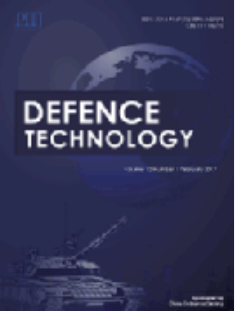Development of a composite sandwich-structure piezoresistive pressure sensor for subtle-pressures application
IF 5
Q1 ENGINEERING, MULTIDISCIPLINARY
引用次数: 0
Abstract
The Design and manufacturing of a noble piezoresistive pressure sensor (PS) for subtle pressures (<1 kPa) were presented. Meanwhile, in the studies conducted in the field of pressure sensors, the measurement of subtle pressures has received less attention. The limitations in the inherent gauge factor in silicon, have led to the development of polymer and composite resistive sensitive elements. However, in the development of resistance sensing elements, the structure of composite elements with reinforcement core has not been used. The proposed PS had a composite sandwich structure consisting of a nanocomposite graphene layer covered by layers of PDMS at the bottom and on the top coupled with a polyimide (PI) core. Various tests were performed to analyze the PS. The primary design target was improved sensitivity, with a finite-element method (FEM) utilized to simulate the stress profile over piezoresistive elements and membrane deflection at various pressures. The PS manufacturing process is based on Laser-engraved graphene (LEG) technology and PDMS casting. Experimental data indicated that the manufactured PS exhibits a sensitivity of 67.28 mV/kPa for a pressure range of 30–300 Pa in ambient temperature.
开发用于微妙压力应用的复合夹层结构压阻式压力传感器
介绍了一种用于微压力(1kpa)的高压压阻式压力传感器(PS)的设计与制造。同时,在压力传感器领域的研究中,微小压力的测量受到的关注较少。硅固有的测量因子的局限性,导致了聚合物和复合电阻敏感元件的发展。然而,在电阻传感元件的开发中,还没有采用带增强芯的复合元件结构。所提出的PS具有复合三明治结构,由底部和顶部由多层PDMS覆盖的纳米复合石墨烯层以及聚酰亚胺(PI)核心组成。研究人员进行了各种测试来分析PS。主要设计目标是提高灵敏度,采用有限元法(FEM)模拟不同压力下压阻元件和膜挠度的应力分布。PS的制造工艺是基于激光雕刻石墨烯(LEG)技术和PDMS铸造。实验数据表明,在环境温度30 ~ 300 Pa的压力范围内,PS的灵敏度为67.28 mV/kPa。
本文章由计算机程序翻译,如有差异,请以英文原文为准。
求助全文
约1分钟内获得全文
求助全文
来源期刊

Defence Technology(防务技术)
Mechanical Engineering, Control and Systems Engineering, Industrial and Manufacturing Engineering
CiteScore
8.70
自引率
0.00%
发文量
728
审稿时长
25 days
期刊介绍:
Defence Technology, a peer reviewed journal, is published monthly and aims to become the best international academic exchange platform for the research related to defence technology. It publishes original research papers having direct bearing on defence, with a balanced coverage on analytical, experimental, numerical simulation and applied investigations. It covers various disciplines of science, technology and engineering.
 求助内容:
求助内容: 应助结果提醒方式:
应助结果提醒方式:


